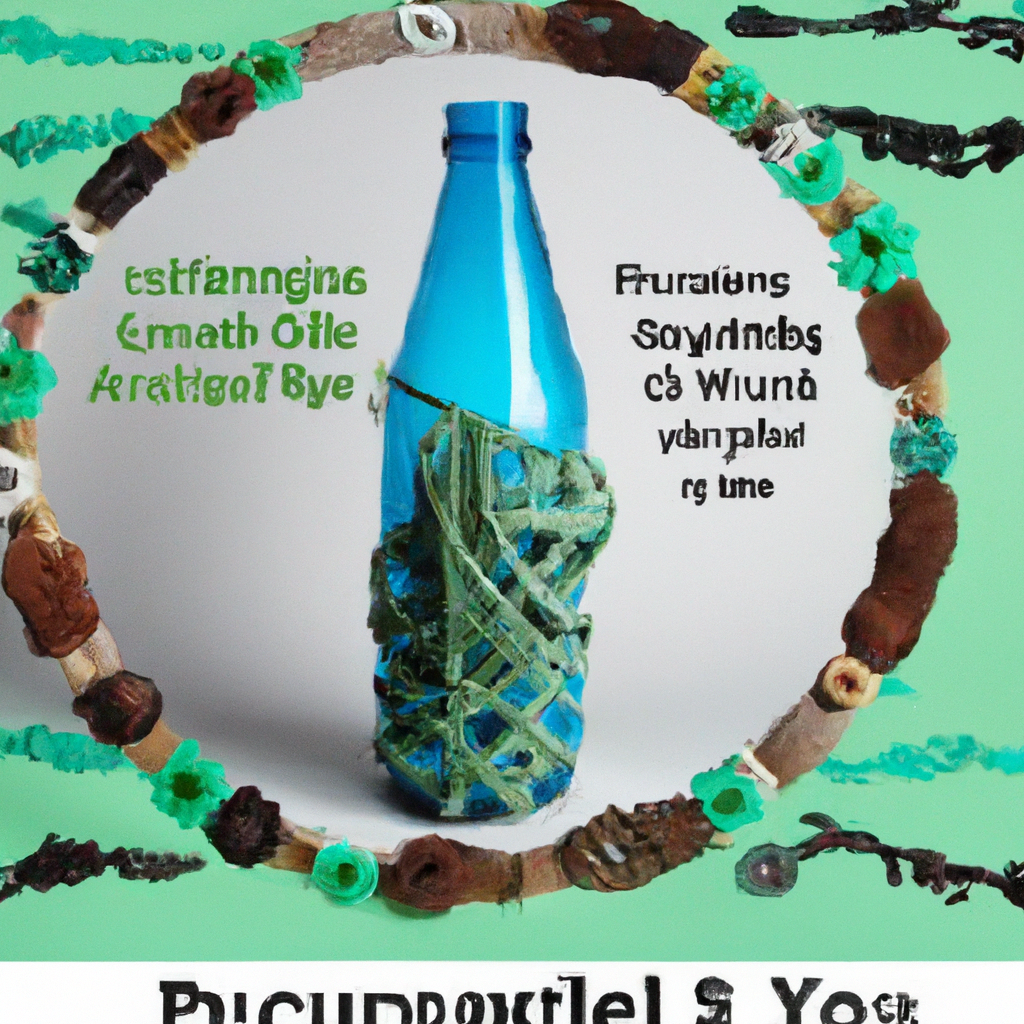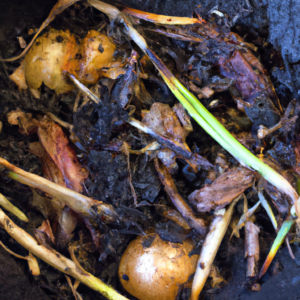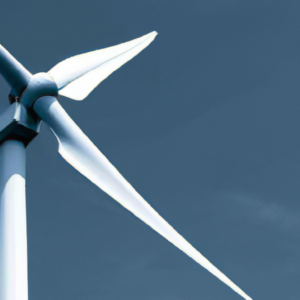If you’ve ever wondered what upcycling is and how it sets itself apart from recycling, you’ve come to the right place. In this article, we’ll explore the fascinating world of upcycling and uncover the key differences between these two eco-friendly practices. Get ready to discover the creative ways in which old, discarded materials can be transformed into something new and valuable, giving them a second lease on life. So, sit back, relax, and prepare to be amazed by the power of upcycling!
Check Out Our Top Eco Friendly Product Picks On Amazon Here
What is upcycling?
Upcycling is the process of transforming waste materials or products into new, usable items of higher value or quality. It involves taking something that would otherwise be discarded and giving it a new purpose or function. Unlike recycling, which breaks down materials to create new products, upcycling focuses on reusing the existing materials in creative ways. With upcycling, the goal is to extend the lifespan of a product and reduce waste.
Definition of upcycling
Upcycling can be defined as the practice of repurposing or transforming waste materials or products into new items with increased value or functionality. It involves using innovative design and creative techniques to give new life to discarded objects, adding aesthetic appeal and usability that surpasses their original form.
Historical background
While the term “upcycling” has gained popularity in recent years, the concept itself has been around for centuries. Throughout history, people have been repurposing and reusing materials due to resource scarcity, economic constraints, or personal creativity. For example, during World War II, people upcycled materials such as scrap metal and nylon stockings to contribute to the war effort. The environmental movement in the 1960s also played a significant role in promoting upcycling as a sustainable solution to waste reduction.
Benefits of upcycling
Upcycling offers several benefits, both for individuals and the environment. Firstly, it helps reduce waste by giving new life to discarded objects, preventing them from ending up in landfills or incinerators. This contributes to the conservation of natural resources and reduces the need to extract and process raw materials. Additionally, upcycling promotes creativity and innovation by challenging individuals to think outside the box and find new uses for old objects. It also provides an opportunity for personal expression and customization, as upcycled items often have unique, one-of-a-kind characteristics.
How does upcycling differ from recycling?
While upcycling and recycling share the common goal of reducing waste and promoting sustainability, there are fundamental differences between the two processes.
Definition of recycling
Recycling involves breaking down materials, such as paper, plastic, or glass, into their raw components to create new products. The materials are processed and transformed through various methods, such as melting, shredding, or pulping. The resulting recycled materials are then used as inputs for manufacturing new items.
The process of recycling
The recycling process typically follows a linear path, starting with the collection of recyclable materials, sorting and cleaning them, processing and transforming the materials, and finally manufacturing new products. This process often requires significant energy input and may involve chemical treatments or the addition of virgin materials to achieve the desired quality.
Environmental impact
While recycling has undeniable environmental benefits, it also has some limitations. The process of recycling consumes energy, resulting in carbon emissions and other environmental impacts. Additionally, not all materials are easily recyclable, leading to a significant portion of waste still ending up in landfills. Furthermore, the continued demand for virgin materials to supplement recycling streams puts pressure on natural resources and contributes to environmental degradation.

Check Out Our Top Eco Friendly Product Picks On Amazon Here
Examples of upcycling
Upcycling can be applied to various domains, from furniture and clothing to art and home decor. Here are some examples of popular upcycling practices:
Upcycled furniture
Furniture upcycling involves transforming old or unwanted furniture into unique, functional pieces. This can be achieved through techniques such as sanding, painting, reupholstering, or repurposing. For instance, an old wooden pallet can be turned into a stylish coffee table, or vintage suitcases can be transformed into trendy storage solutions.
Upcycled clothing
Upcycled clothing refers to the creative reuse of old garments or fabrics to create new fashion pieces. This can involve techniques such as patchwork, embellishment, or altering the original garment’s design. Upcycled clothing promotes sustainable fashion by extending the lifespan of textiles and reducing the need for new clothing production.
Upcycled art
Upcycled art embraces the concept of repurposing materials to create visually appealing works. Artists use discarded objects, such as scrap metal, plastic bottles, or old books, to form sculptures, installations, or mixed media pieces. Upcycled art not only showcases creativity but also raises awareness about waste and consumerism.
Advantages of upcycling
Upcycling offers several advantages that make it an attractive approach to waste reduction and sustainability.
Reduces waste
One of the primary benefits of upcycling is its ability to divert waste from landfills or incinerators. By transforming discarded items into new products, upcycling reduces the need for disposal methods that harm the environment. This reduces the strain on waste management systems and conserves valuable landfill space.
Saves resources
Upcycling contributes to the conservation of natural resources by reducing the demand for new materials. By repurposing existing items, upcycling minimizes the need for resource extraction, manufacturing processes, and energy consumption associated with producing new products. This helps preserve finite resources and reduces the ecological footprint.
Promotes creativity
Upcycling encourages individuals to think creatively and find innovative solutions to waste reduction. It provides an outlet for artistic expression, allowing individuals to showcase their unique style and personality through upcycled creations. Moreover, upcycling challenges the notion of disposability and encourages a shift towards a more sustainable and mindful approach to consumption.

Limitations of upcycling
While upcycling offers numerous advantages, it also faces certain limitations that need to be acknowledged.
Limited scalability
One limitation of upcycling is its constrained scalability compared to recycling. Upcycling often requires manual labor and individual craftsmanship to transform waste into new products. This limits its ability to address large-scale waste management challenges and may result in a limited quantity of upcycled items available in the market.
Higher production costs
The nature of upcycling, which involves repurposing existing materials, can lead to higher production costs compared to manufacturing new products from virgin materials. The collection, cleaning, and transformation of waste materials may require additional resources and labor, which ultimately affects the final cost of upcycled products.
Quality control
Maintaining consistent quality control can be a challenge in upcycling, particularly when working with diverse and often unpredictable waste materials. Variations in materials, sizes, and conditions of discarded objects can impact the finished product’s durability and performance. Ensuring the reliability and consistency of upcycled items can be more challenging than with products created through traditional manufacturing processes.
Upcycling vs. recycling in the fashion industry
In the fashion industry, upcycling and recycling offer sustainable solutions to address the growing textile waste problem.
Textile waste in the fashion industry
The fashion industry is known for its high levels of waste and environmental impact. Fast fashion, characterized by cheaply produced garments and short product lifecycles, has contributed to a staggering amount of textile waste. Discarded clothing and fabrics end up in landfills, where they can take years to decompose, releasing harmful substances into the environment.
Upcycling solutions in fashion
Upcycling in fashion involves transforming old or discarded garments into new, fashionable pieces. Designers and brands repurpose or modify existing clothing through various techniques, such as patchwork, embellishments, or alterations, to create unique, eco-friendly fashion items. Upcycled fashion not only reduces textile waste but also offers consumers a more sustainable alternative to fast fashion.
Recycling alternatives in fashion
Recycling in the fashion industry involves turning textile waste into new fibers or materials for manufacturing new garments or products. Technologies such as mechanical recycling, chemical recycling, and fiber-to-fiber recycling are used to break down and transform textile waste into new materials. By closing the loop and reintroducing recycled fibers into the production cycle, fashion brands can reduce their reliance on virgin materials and reduce waste.

Upcycling as a sustainable lifestyle
Upcycling goes beyond specific industries and can be embraced as a sustainable lifestyle choice for individuals and communities.
Upcycling at home
At the individual level, upcycling can be practiced at home by repurposing old or unused items. Furniture, clothing, kitchen utensils, and home decor can be transformed through creative upcycling projects, adding a personal touch to living spaces. This not only reduces waste but also provides opportunities for creative expression and resourcefulness.
Benefits for individuals and communities
Adopting upcycling as a lifestyle can bring numerous benefits to individuals and communities. For individuals, upcycling fosters creativity, self-sufficiency, and a sense of accomplishment. It allows individuals to save money by repurposing items rather than purchasing new ones. At the community level, upcycling can promote local economies, skills development, and community engagement through workshops, upcycling markets, and collaborative projects.
Tips for successful upcycling projects
To ensure successful upcycling projects, consider the following tips:
- Start small: Begin with simple upcycling projects to gain confidence and build skills.
- Source materials wisely: Look for discarded objects or items in thrift stores, garage sales, or online marketplaces.
- Plan and design: Take time to plan and visualize your project before starting the upcycling process.
- Learn techniques: Familiarize yourself with different upcycling techniques, such as painting, sewing, woodworking, or repurposing.
- Join communities: Connect with other upcyclers, join online forums or local groups to share ideas, resources, and inspiration.
- Embrace mistakes: Upcycling involves experimentation, so embrace the possibility of making mistakes and learn from them.
Upcycling and reducing electronic waste
Electronic waste, or e-waste, poses a significant environmental challenge due to its toxic components and rapid obsolescence.
The issue of electronic waste
Electronic devices, such as smartphones, computers, and appliances, contain hazardous substances and valuable resources. When improperly disposed of, e-waste can release toxic chemicals, such as lead, mercury, and cadmium, into the environment. Additionally, the rapid advancement of technology leads to a high turnover of electronic devices, generating large quantities of waste.
Electronic upcycling initiatives
Electronic upcycling involves repurposing or modifying old electronic devices to give them new functionalities or forms. For example, old computer components can be transformed into decorative lamps, or outdated phones can be refurbished for use in educational programs or emergency communication devices. Electronic upcycling reduces the environmental impact of e-waste by extending the lifespan of devices and minimizing the need for new production.
Recycling options for electronics
Recycling electronic devices is essential to recover valuable materials and prevent their improper disposal. Certified e-waste recycling facilities can safely extract and separate components, such as metals, plastics, and precious metals, for reuse or proper disposal. Many electronic manufacturers also offer take-back programs or recycling options to ensure responsible disposal of their products.

The future of upcycling
As society increasingly recognizes the importance of sustainable practices, the future of upcycling holds great potential for innovation and collaboration in waste reduction.
Emerging technologies in upcycling
Advancements in technology, such as 3D printing and digital fabrication, offer new possibilities for upcycling. These technologies enable the creation of intricate and customized products using waste materials or recycled inputs. Additionally, machine learning and artificial intelligence can assist in identifying suitable upcycling opportunities and optimizing the process for efficiency.
Collaborative upcycling initiatives
Collaboration among individuals, communities, businesses, and governments plays a crucial role in fostering upcycling practices. Collaborative upcycling initiatives involve partnerships between different stakeholders to streamline waste collection, facilitate material sharing, and encourage knowledge exchange. By working together, these initiatives can create larger-scale upcycling projects, share resources, and pool expertise.
Innovation in upcycled products
Innovation in upcycled products is expected to continue, creating new market opportunities and driving consumer demand. Designers and entrepreneurs are continuously exploring ways to transform waste materials into desirable and functional products. From upcycled fashion collections to eco-friendly home decor, the market for upcycled goods continues to expand, driving both environmental and economic benefits.
Conclusion
Upcycling and recycling are both valuable approaches to waste reduction and sustainability. While recycling emphasizes breaking down materials to create new products, upcycling focuses on repurposing and transforming waste items into new, usable items of higher value. Upcycling offers various benefits, such as waste reduction, resource conservation, and the promotion of creativity. However, it also faces limitations, including scalability and quality control challenges. In industries like fashion and electronics, upcycling and recycling provide sustainable solutions to address waste and environmental impacts. By adopting upcycling as a lifestyle, individuals and communities can contribute to a more sustainable future while enjoying the benefits of creativity and resourcefulness. The future of upcycling holds promise, with emerging technologies, collaborative initiatives, and continued innovation driving the growth of this sustainable practice. By encouraging the adoption of upcycling and fostering a culture of waste reduction, we can create a more circular economy and protect the planet for future generations.




